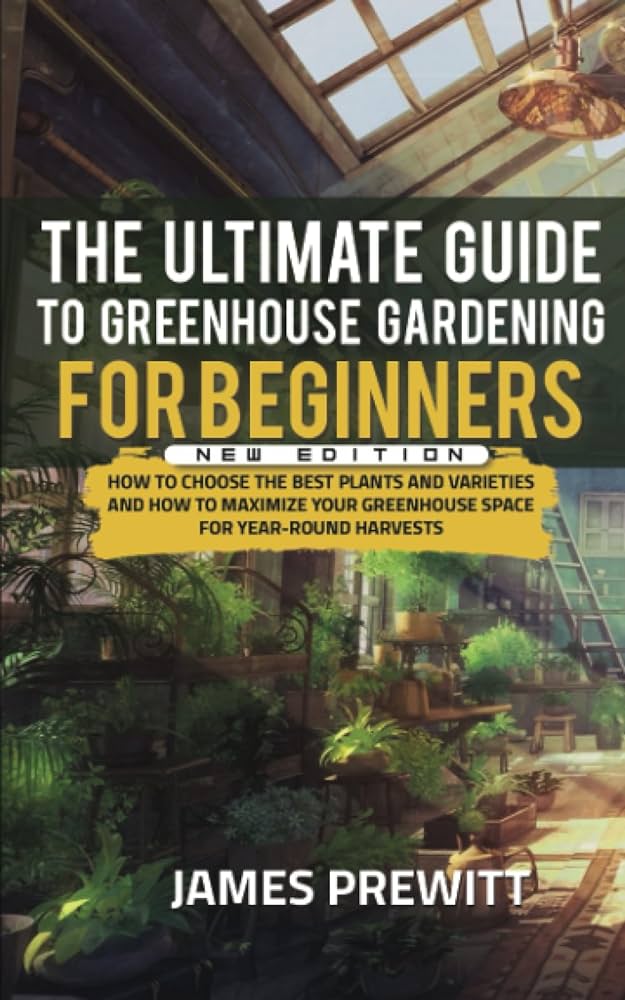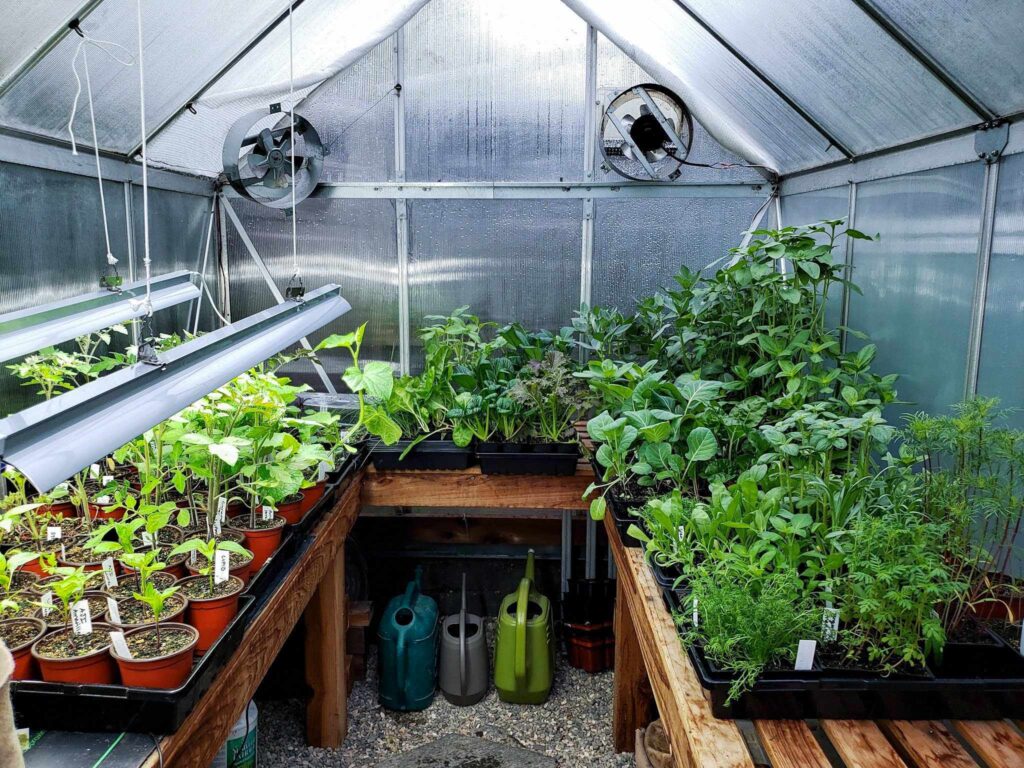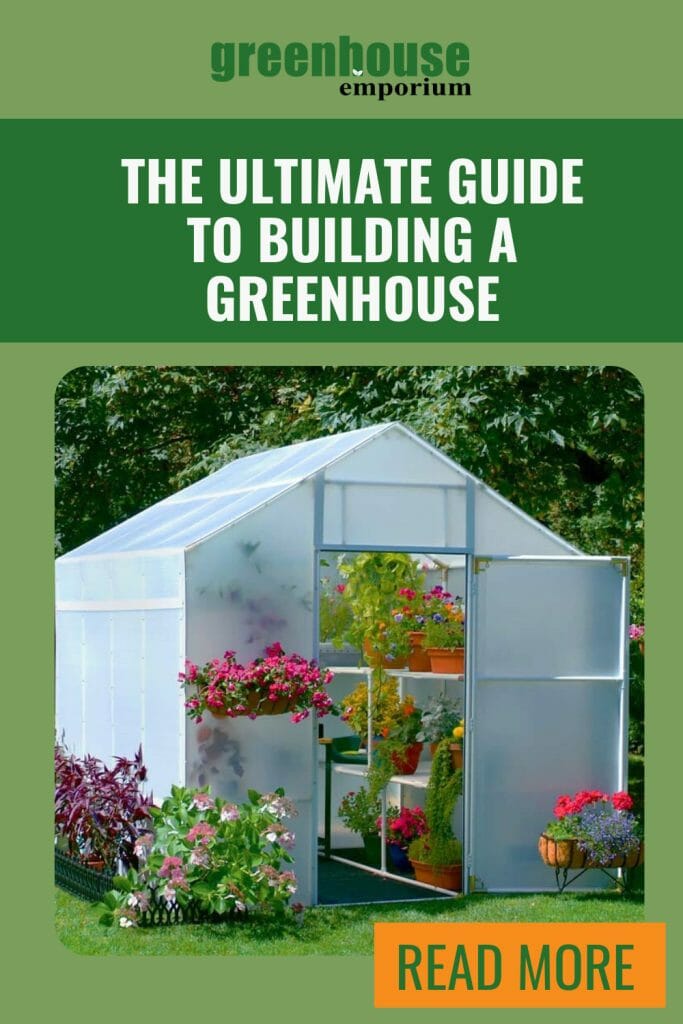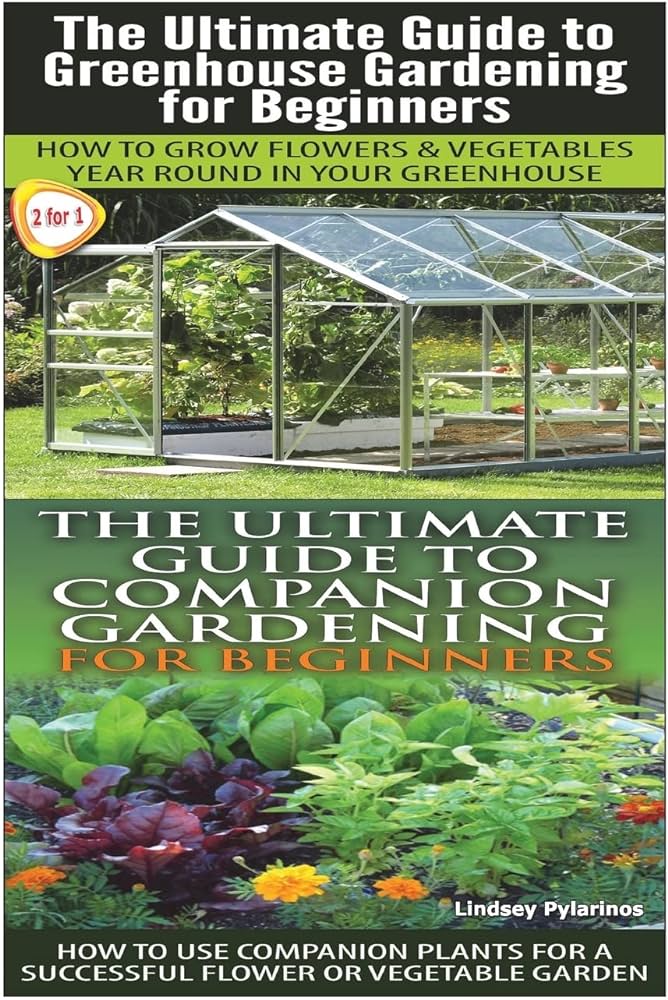
Today, we are going to explore the fascinating world of greenhouse gardening and uncover the ultimate guide to the tools and equipment that can help you create a thriving and bountiful garden. Whether you are a seasoned gardener or just starting out, having the right tools at your disposal is key to success. From pruning shears to temperature controls, this article will walk you through the must-have items that will make your greenhouse gardening journey a breeze. Get ready to transform your green space into a haven of blooming flowers and thriving vegetables with the help of these essential tools and equipment.
Choosing the Right Greenhouse Structure
When it comes to greenhouse gardening, one of the most important decisions you’ll need to make is choosing the right greenhouse structure. There are a variety of types to choose from, each with their own benefits and considerations.
Types of Greenhouses
-
Lean-To Greenhouses: These are attached to an existing structure, such as a house or garage. They make efficient use of space and can be easier to heat since they share a wall with another building.
-
Free-Standing Greenhouses: As the name suggests, these greenhouses stand on their own and can be placed anywhere on your property. They offer more flexibility in terms of size and layout, but may require more heating and insulation.
-
Dome Greenhouses: Dome-shaped structures are growing in popularity due to their energy efficiency and strength. The rounded shape maximizes sunlight exposure and allows for better air circulation.
-
Gable Greenhouses: Gable greenhouses have a traditional peaked roof, offering more headroom and allowing for better ventilation. They can be freestanding or attached to another structure.
-
Polyethylene Film Greenhouses: These greenhouses are covered with a UV-protected polyethylene film, which is lightweight and cost-effective. They are easy to assemble and disassemble, making them a great option for seasonal gardening.
Considerations for Size and Location
The size and location of your greenhouse are important factors to consider. The size will depend on your available space and the amount of plants you want to grow. It’s important to choose a size that allows for easy movement and accessibility within the greenhouse.
When it comes to location, choose a spot that receives ample sunlight throughout the day. Ideally, the greenhouse should face south to maximize sunlight exposure. Avoid placing it near large trees or buildings that may cast shade. Also, consider factors like wind exposure and proximity to a water source.
Structural Materials and Design
Greenhouses are typically made from a combination of glass, polycarbonate, or polyethylene film. Glass provides the best light transmission and durability, but can be more expensive. Polycarbonate is a lightweight and shatterproof option, while polyethylene film is affordable and easy to replace.
When it comes to design, consider factors like ventilation, insulation, and ease of maintenance. Look for features like vents, windows, and automatic openers to regulate temperature and humidity. Also, ensure that the structure is sturdy and can withstand the elements in your area.
Essential Gardening Hand Tools
To effectively tend to your plants in the greenhouse, you’ll need a set of essential gardening hand tools. These tools will help you with tasks like planting, weeding, pruning, and cultivating.
Trowel
A trowel is a must-have tool for any gardener. It’s a small handheld shovel that is perfect for digging holes, transplanting seedlings, and loosening soil. Look for a trowel with a comfortable grip and a sturdy blade.
Hand Fork
A hand fork is used for breaking up soil and removing weeds. It’s a smaller version of a traditional garden fork and is great for working in tight spaces. Look for one with sharp tines and a comfortable handle.
Pruning Shears
Pruning shears, also known as secateurs, are essential for maintaining the health and shape of your plants. They are used for cutting and trimming branches, stems, and flowers. Look for a pair with a sharp blade and a comfortable grip.
Hand Cultivator
A hand cultivator is a versatile tool that helps break up compacted soil, remove weeds, and aerate the soil. It has multiple tines or prongs attached to a handle and is perfect for small-scale gardening. Look for one with sturdy tines and an ergonomic handle.
Gardening Gloves
Protecting your hands is important while gardening. Invest in a pair of quality gardening gloves that provide protection from thorns, sharp edges, and chemicals. Look for gloves that fit well and allow for dexterity, so you can easily handle plants and tools.

This image is property of Amazon.com.
Essential Power Tools for Greenhouse Gardening
While hand tools are essential for greenhouse gardening, power tools can greatly simplify and expedite certain tasks. Here are some essential power tools to consider for your greenhouse.
String Trimmer
A string trimmer, also known as a weed whacker or line trimmer, is used to trim grass and weeds in hard-to-reach areas. It’s especially useful for keeping the edges of your greenhouse tidy. Look for one with adjustable height and a powerful engine.
Leaf Blower
A leaf blower can come in handy for cleaning up fallen leaves, debris, and grass clippings in and around your greenhouse. Look for a leaf blower with adjustable speeds and a comfortable grip for ease of use.
Electric Pruning Shears
Electric pruning shears are a time-saving tool for larger pruning tasks. They can effortlessly cut through thicker branches and reduce fatigue. Look for one with a sharp blade, a comfortable grip, and a long-lasting battery.
Heat Gun
A heat gun is useful for tasks like removing labels and shrink-wrapping. It produces hot air that can be directed precisely, allowing for efficient and controlled heating. Look for a heat gun that offers variable temperature settings and safety features.
Electric Lawn Mower
If your greenhouse includes a grassy area, an electric lawn mower can be a handy tool for keeping it well-maintained. Look for a lightweight and maneuverable mower with adjustable cutting heights to suit your needs.
Irrigation and Watering Tools
Proper irrigation and watering are essential for maintaining healthy plants in a greenhouse. Here are some tools that will help you achieve optimal hydration levels for your plants.
Drip Irrigation System
A drip irrigation system is a highly efficient way to provide water to your plants. It delivers water directly to the plant’s roots, reducing waste and minimizing the risk of disease. Look for a system that is easy to install and adjust.
Watering Cans
Watering cans are a classic and versatile tool for watering plants. They allow for targeted watering, especially for smaller plants or those in pots. Look for a watering can with a comfortable grip and a spout that offers a gentle flow.
Hose and Spray Nozzle
Having a hose with a spray nozzle attachment is essential for larger watering tasks and for general cleaning purposes. Look for a hose with a durable and kink-resistant design, along with a spray nozzle that offers different water flow options.
Water Timers
Water timers are great for automating watering schedules, ensuring consistent moisture levels, and saving water. Look for one with multiple programming options, easy installation, and a weather-resistant design.
Watering Wand
A watering wand is a long, narrow tool with a gentle shower-head attachment. It allows for easy and precise watering of hanging baskets or hard-to-reach plants. Look for a wand with a comfortable grip and a variety of spray patterns.

This image is property of homesteadandchill.com.
Temperature and Humidity Control Equipment
Maintaining the right temperature and humidity levels is crucial for successful greenhouse gardening. Here are some tools and equipment that will help you achieve optimal growing conditions.
Thermometers
Thermometers are essential for monitoring the temperature inside your greenhouse. Look for digital thermometers that are accurate and have a built-in humidity sensor. This will provide you with real-time data on the conditions inside your greenhouse.
Humidifiers
If you live in a dry climate or if your greenhouse lacks sufficient humidity, a humidifier can help maintain the right moisture levels. Look for a humidifier that can cover the size of your greenhouse and has adjustable settings.
Heaters
During colder months or in regions with harsh winters, a heater is necessary to keep your greenhouse warm. Look for a heater that is suitable for greenhouse use, has adjustable temperature settings, and is energy-efficient.
Cooling Fans
To prevent overheating during the summer or in warmer climates, cooling fans are essential. They help improve air circulation and maintain a comfortable temperature for your plants. Look for fans that are specifically designed for greenhouse use and have adjustable speed settings.
Shade Cloth
In areas with intense sunlight or during hotter months, shade cloth can provide protection and balance for your plants. It helps reduce the amount of direct sunlight and prevents overheating. Look for a shade cloth that offers sufficient shade percentage and is UV-resistant.
Planting and Potting Tools
To start your plants off on the right foot, you’ll need a set of planting and potting tools. These tools will help you with tasks like seed starting, transplanting, soil mixing, and labeling.
Planting Trays
Planting trays provide an organized and efficient way to start seeds and grow seedlings. Look for trays with appropriate drainage holes and a sturdy construction.
Seed Starting Pots
Seed starting pots are essential for giving your seeds a good start. Look for biodegradable pots that can be planted directly into the soil, avoiding root disturbance during transplantation.
Potting Bench
A potting bench is a dedicated workspace for all your potting needs. It provides ample surface area for soil mixing, potting, and plant maintenance. Look for a potting bench with storage shelves for added convenience.
Potting Soil Mixers
Potting soil mixers are power tools that make the task of mixing soil easier and more efficient. They help ensure a consistent blend of soil components for optimal plant growth. Look for a mixer that has adjustable speed and a comfortable grip.
Plant Labels and Markers
Keeping track of your plants is essential, especially in a greenhouse with numerous varieties. Use plant labels or markers to identify your plants and keep your garden organized. Look for weather-resistant labels or markers that won’t fade or wash off easily.

This image is property of greenhouseemporium.com.
Propagation Tools and Equipment
If you are interested in expanding your plant collection through propagation, you’ll need the right tools and equipment to get started. Here are some essentials for successful propagation.
Propagation Trays
Propagation trays provide a controlled environment for rooting cuttings or germinating seeds. They often come with clear lids to create a mini greenhouse effect. Look for trays that have adjustable ventilation and a sturdy construction.
Rooting Hormones
Rooting hormones are used to stimulate root development in cuttings. They can significantly increase the success rate of propagating plants. Look for a rooting hormone that is safe and easy to use.
Heat Mats
Heat mats provide bottom heat to promote faster and more consistent root growth in cuttings and seeds. Look for a heat mat that is the appropriate size for your trays and has adjustable temperature settings.
Misting Systems
Misting systems help maintain the right moisture levels for propagating plants by providing a fine mist. Look for a system that is easy to install, has adjustable misting settings, and is capable of covering your propagation area.
Propagation Dome
A propagation dome is used in conjunction with propagation trays to create a humid environment. It helps retain moisture and improve the success rate of cuttings and germination. Look for a dome that fits securely on your trays and allows for easy access.
Pest and Disease Control Tools
Preventing and managing pests and diseases is an important part of greenhouse gardening. Here are some tools and methods for keeping your plants healthy.
Insect Netting
Insect netting acts as a physical barrier, preventing pests from reaching your plants. It’s especially effective against flying insects and can be used on windows, doors, or entire greenhouse structures. Look for netting that has a fine mesh and is durable.
Organic Pesticides
If you need to control pests in your greenhouse, choose organic pesticides that are safe for edible plants and the environment. Look for pesticides that target specific pests and provide clear instructions on proper use.
Sticky Traps
Sticky traps are a non-toxic and effective method for monitoring and trapping flying insects. They can help identify pest problems early on and reduce the population of certain pests. Look for traps that are suitable for greenhouse use and have adhesive that is non-toxic to plants.
Biological Controls
Biological controls involve using beneficial insects or organisms to naturally control pests. Ladybugs, lacewings, and predatory mites are examples of biological controls that can be introduced to your greenhouse. Consult with a reputable supplier to determine the most suitable option for your pest problems.
Plant Disease Diagnostics Kits
If you suspect a plant disease in your greenhouse, plant disease diagnostics kits can help identify the problem. These kits typically include tools for collecting and testing plant samples. Look for kits that provide clear instructions and accurate results.

This image is property of acropolis-wp-content-uploads.s3.us-west-1.amazonaws.com.
Fertilization and Soil Management Tools
Maintaining the fertility and health of your soil is crucial for successful greenhouse gardening. Here are some tools and equipment for effective fertilization and soil management.
Compost Bins
Compost bins are used to transform organic waste into nutrient-rich compost. Adding compost to your soil helps improve its fertility and structure. Look for bins that are sturdy, have proper ventilation, and are easy to turn.
Soil Testing Kits
Soil testing kits allow you to analyze the nutrient content and pH level of your soil. This information helps you make informed decisions about fertilization and soil amendments. Look for kits that provide accurate and easy-to-understand results.
Fertilizer Spreaders
Fertilizer spreaders are designed to evenly distribute granular fertilizers over a large area. They help save time and ensure uniform coverage. Look for a spreader with adjustable settings and a comfortable grip.
Soil Aeration Tools
Soil aeration tools are used to improve the oxygenation and drainage of compacted soil. They create small holes or channels that allow air and water to penetrate the soil. Look for tools like spiked aerators or mechanical aerators, depending on the size of your greenhouse.
Mulch
Mulching your greenhouse beds helps conserve moisture, suppress weeds, and regulate soil temperature. Organic mulches like straw or wood chips are commonly used. Look for mulches that are easy to apply and decompose slowly.
Storage and Organization Solutions
Keeping your greenhouse tools, equipment, and supplies organized is essential for a smooth gardening experience. Here are some storage and organization solutions to consider.
Tool Racks and Hangers
Tool racks and hangers are a convenient way to store and organize your gardening hand tools. Look for racks that have hooks or slots for hanging tools and shelves or compartments for extra storage.
Shelving Units
Shelving units provide vertical storage space, allowing you to maximize the use of space in your greenhouse. Look for units that are sturdy, rust-resistant, and capable of holding the weight of your gardening supplies.
Seed Storage Containers
Proper seed storage is important for maintaining seed viability and preventing damage. Look for airtight and moisture-proof containers that are labeled and organized for easy access.
Labeling Systems
Labeling your plants, seeds, and other gardening supplies is essential for organization. Use labeling systems like tags, markers, or plant labels to keep track of your greenhouse inventory. Look for labels or markers that are waterproof and fade-resistant.
Workstation Accessories
To improve efficiency and convenience in your greenhouse, consider workstation accessories like tool organizers, workbenches, and potting tray holders. These accessories help keep your workspace tidy and ensure that tools and supplies are within easy reach.
In conclusion, having the right tools and equipment is essential for successful greenhouse gardening. From choosing the right greenhouse structure to selecting the appropriate hand tools, power tools, irrigation equipment, and storage solutions, each tool serves a specific purpose in enhancing your gardening experience. Invest in high-quality tools that are suitable for greenhouse use and maintain them properly to ensure longevity. With the right tools at your disposal, you’ll be well-equipped to create a thriving and productive greenhouse garden.

This image is property of Amazon.com.

